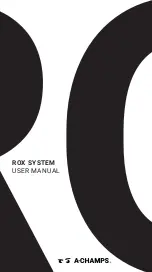
34
EFFECTS
The Reverb effect reproduces the natural ambient “wash” of sound that
occurs when a instrument is played in a room or concert hall. A total of
eight different Reverb types simulating various different performance
environments are available.
1
Turn on the Reverb effect.
Press the REVERB button.
Reverb can also be
turned on and off with
a connected footswitch
(page 21), or from
Function parameter
#31 (page 38).
2
Set the desired Reverb Type (#32) in the Function
mode.
Selecting and changing the Function parameters:
Press the FUNCTION button, then use the numeric keypad to select the
parameter number. After “FUNCTION” stops flashing, use the numeric
keypad or +/- buttons to change the setting. (For details, see page 18.)
For a list of the Reverb Types, see page 39.
• The panel REVERB on/off
button affects only the
keyboard played voices. If
you want to turn off the
Reverb effect for the overall
DJX sound (including
accompaniment and
songs), set the Reverb Type
(#9, page 39) to “off.”
• These settings are not
saved when you turn off the
power. If you wish to save
them, save them to a User
bank in the Performance
Setup feature (page 56).
• Three additional Reverb
Types are available when
controlling the DJX from a
MIDI device. (For details,
see page 114.)
The DJX is equipped with a wide variety of effects that can be used to enhance
the sound of the voices. Four general categories of effects are provided — Re-
verb, Chorus, DSP, and Arpeggiator — and each category has many effect types
to choose from.
Application of the effects is also exceptionally flexible. All four effects can be used simultaneously, and
the degree of the Reverb, Chorus, and DSP effects can be adjusted independently for each of the
voices: Main, Dual, and Split.
001 142
MEASURE
Indicates that Reverb is on
REVERB
REVERB
1 Turn on the effect.
2 Set the effect type
(Function mode
).
3 Set the effect send level for the desired voices — Main, Dual, Split
(Function mode)
.
(Not necessary for Arpeggiator.)
















































